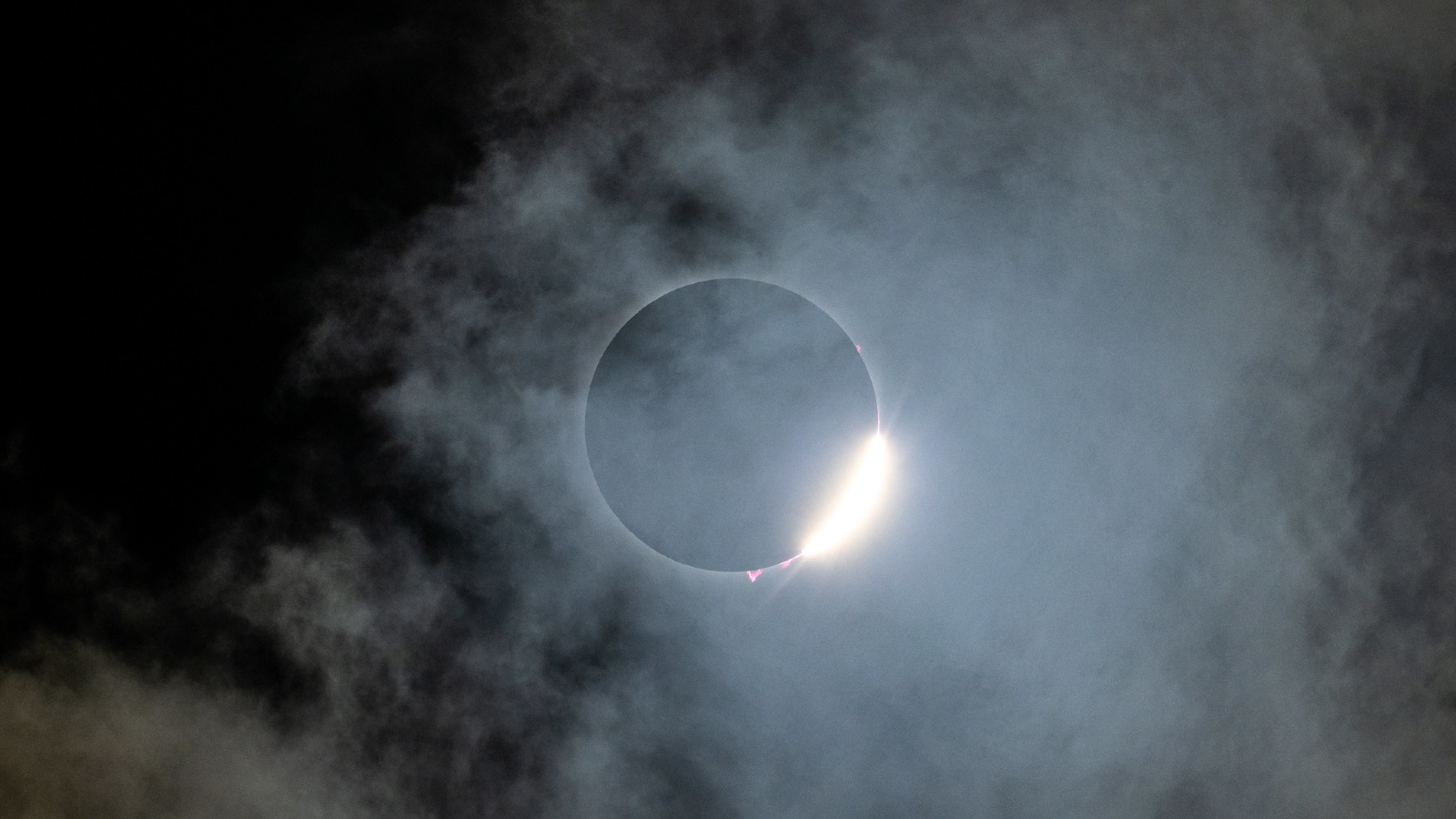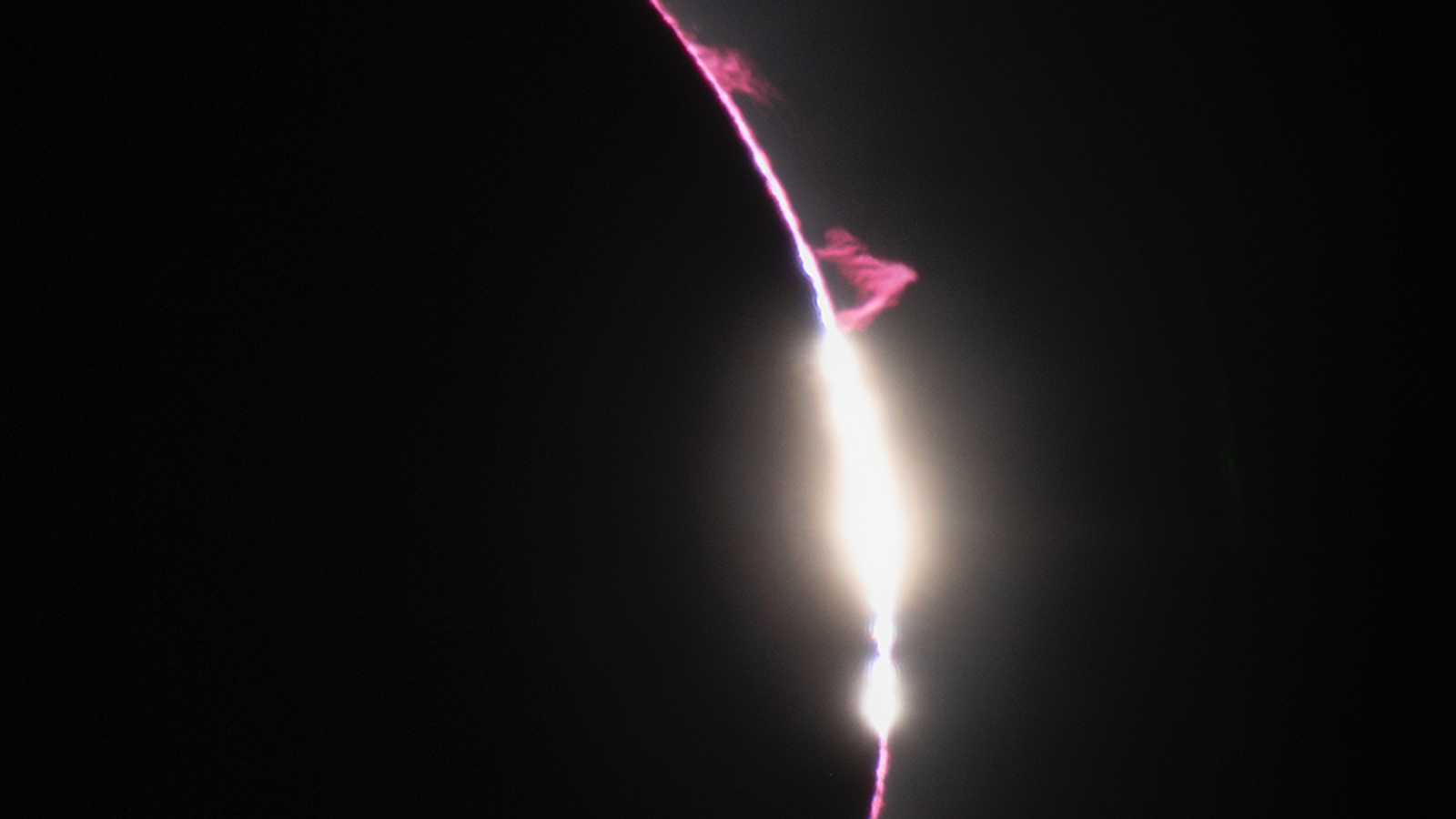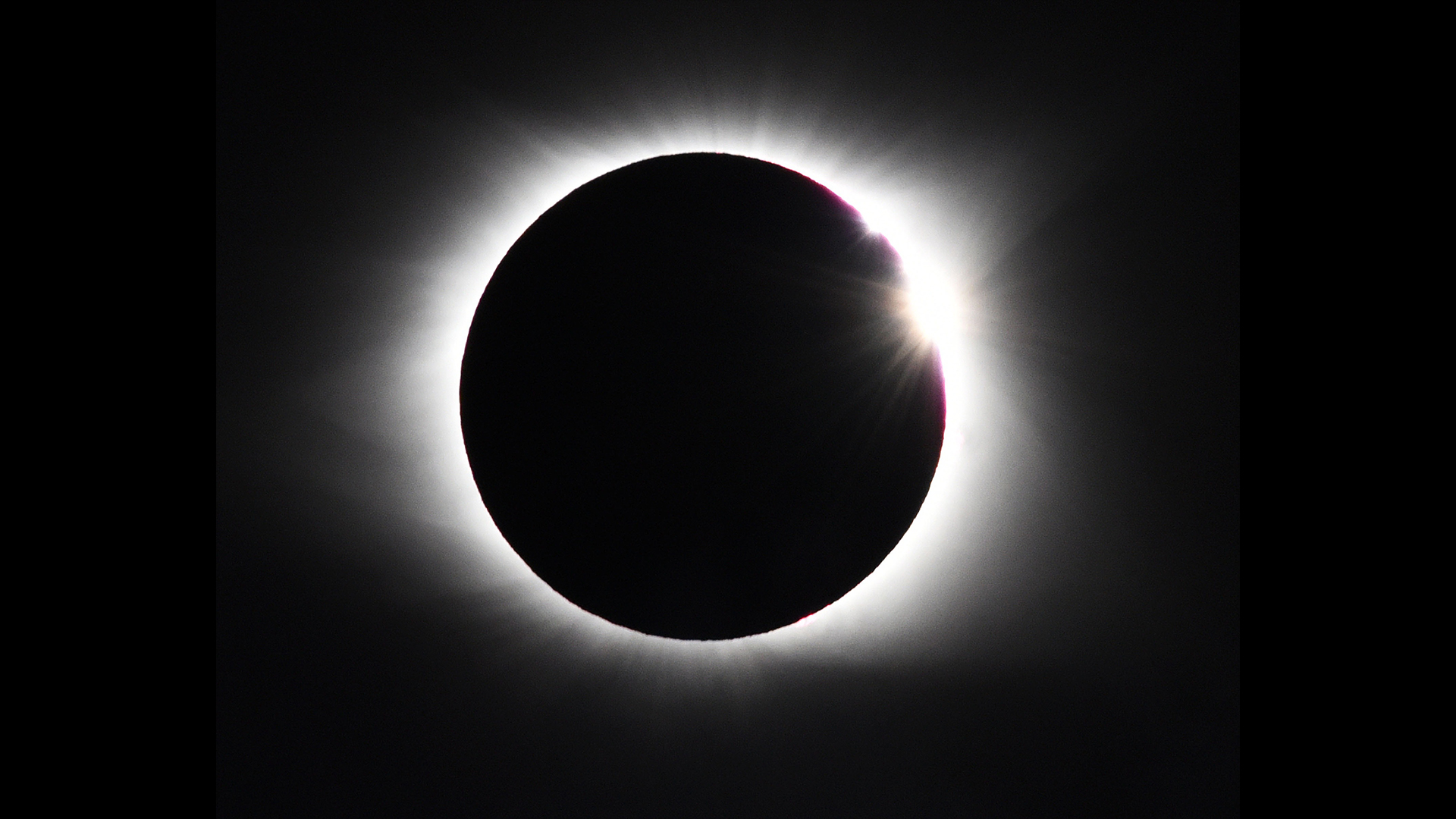7 strange things observed during the April 8 solar eclipse: From shifting time signals to puzzling plasma plumes
During the recent total solar eclipse on April 8, scientists and other observers spotted some strange things in the sky and on the ground. Here are some of our favorites.

On April 8, millions of people across North America looked up to the sky as the moon temporarily (and completely) blocked out the sun during the total solar eclipse. The historic cosmic event, which was also seen from space, was special because of the length of totality — the period when the sun's light was completely obscured — which lasted up to 4 minutes, 28 seconds.
However, several other strange things happened during the eclipse that helped to further elevate it to a once-in-a-lifetime experience. From mysterious red dots and a newly discovered solar system object to surprising animal and human behaviors, here are the six weirdest things that happened during the eclipse.
Related: Top total solar eclipses to look out for over the next decade
Shifting 'time signals'

As the moon's shadow passed across North America, radio operators noticed a small shift in the frequency and wavelengths of the signals they were sending and receiving. These subtle changes were also spotted in signals sent out by a government-run station in Colorado, which transmits digital time codes to millions of people across the world.
The altered signals were the result of changes to the upper atmosphere caused by a sudden lack of solar radiation during the eclipse. These changes meant that radio waves which bounced off this part of the atmosphere, had to travel further and became stretched as a result.
Luckily, the changes to the time signals being transmitted did not alter the codes embedded within them, meaning that no actual changes to the time we experience occurred.
Puzzling plasma plumes

During totality, thousands of people witnessed peculiar red dots around the edge of the sun's obscured disk. Detailed photos of these dots revealed that they were fiery plumes of plasma that had seemingly erupted from the sun and were towering above our home star's surface.
Sign up for the Live Science daily newsletter now
Get the world’s most fascinating discoveries delivered straight to your inbox.
Lots of people assumed that these solar outbursts were the result of powerful explosions known as solar flares. However, there were no flares during totality. Experts later explained that what people were seeing was another phenomenon known as solar prominences. These large plasma structures erupt from the sun but remain intact and attached to the solar surface for weeks at a time.
Photographers initially hoped to photograph solar flares during totality. But in the lead-up to the eclipse, the sun entered a surprising lull in solar activity, despite being near the peak in the solar cycle. As a result, explosive flares were always going to be unlikely.
New comet discovered (and destroyed)

One of the biggest surprises during the total solar eclipse was the discovery of a tiny "sungrazer" comet named SOHO-5008, which was first spotted by an amateur astronomer just hours before the event began.
Scientists immediately predicted that the comet might be visible to photographers during the eclipse. As suspected, multiple photographers captured blurry images of the comet as it raced toward the sun. However, it was not visible to the naked eye.
Then, just a few hours after the eclipse ended, the newly identified comet appeared to be destroyed by the sun as it got too close to our home star and likely disintegrated.
Animals acting oddly

For humans, the eclipse is a special event that we can understand and predict in advance. But for animals, totality is a massive shock, and this surprise can trigger some rather interesting behaviors.
Zoos located along the path of totality kept a close eye on their animals during the eclipse.
At the Fort Worth Zoo in Texas, lots of animals — including gorillas, tortoises, elephants and bonobos — mistook the darkening sky for dusk and went to return to their indoor areas, CBS News reported. And at the Indianapolis Zoo, several bird species began to settle down for the night.
At Dallas Zoo, zebras, giraffes and chimpanzees were seen running around or patrolling their enclosures, while flamingos huddled together for safety, all of which are signs of anxiety, according to CBS News. Meanwhile, an ostrich at the same zoo laid an egg during totality, although it is unclear if this was caused by the eclipse.
Live Science's Brandon Specktor also witnessed some strange animal behavior as he watched the eclipse live from the Royal Botanical Gardens in Hamilton, Ontario, with his family — and a goose. The waterfowl stayed eerily quiet during totality before erupting with a loud honk as the sun reappeared, which was echoed with chirps from other birds seemingly "greeting what they may have imagined was a new dawn."
Massive internet usage drop-off

During totality, humans in the path of the moon's shadow displayed a surprising behavioral change that is becoming increasingly rare in the modern age: They put down their phones and stopped using the internet.
Network services and cybersecurity company Cloudflare reported that, during the eclipse, internet usage across the path of totality fell as people looked up to the sky. Across the U.S., internet usage dropped by 8% during the eclipse. However, in certain states — including Vermont, Ohio, New Hampshire, Maine, Indiana and Arkansas, parts of which were in the path of totality — internet usage decreased by at least 40% during totality. The biggest drop was seen in Vermont, where online traffic plummeted by 60%.
Similar decreases were also seen in parts of Mexico and Canada, which were in the path of the eclipse as well, Cloudflare reported.
Visible daytime planets

Observing the planets is normally reserved for nighttime hours and is possible only if you know where to look. But during totality, eclipse observers got a rare chance to spot some of the planets during the day.
As initially predicted, Jupiter and Venus were visible to the naked eye during totality. Both appeared near the sun, although they were not visible to everyone because of cloud cover.
Planets can be seen during the eclipse only if they are near our home star in the sky. The extended period of totality experienced by most eclipse observers also increased the chances of seeing the planets.
"Baily's beads" and "diamond rings"

Depending on where you were during totality, you also may have seen some weird lights around the sun.
Lots of people reported witnessing multiple points of light around the obscured sun. This effect, known as Baily's beads, occurs when rays of sunlight shine between mountains on the moon's uneven edge just before and after totality. Others may have spotted a "diamond ring," where a large, bright point emerges as the moon continues to move farther away. (You may have missed these phenomena completely if you were wearing your eclipse glasses at the time.)
Showing impeccable timing, Space.com reporter Josh Dinner used one of these diamond rings to propose to his partner during totality — and she said yes.
Other weird eclipse stuff
Lots of other strange things happen during an eclipse. You also may have sensed a sudden cooling effect as the sun's radiation was blocked out by the moon, or started seeing predominantly purple light thanks to a color-shifting phenomenon known as the Purkinje effect. You also may have seen clouds vanish overhead as the ground beneath you rapidly cooled.
Even if you missed the eclipse, you can still watch NASA's livestream of the event. And the next total solar eclipse is just a couple of years away, in 2026 — if you can make it to Greenland, Iceland or Spain.

Harry is a U.K.-based senior staff writer at Live Science. He studied marine biology at the University of Exeter before training to become a journalist. He covers a wide range of topics including space exploration, planetary science, space weather, climate change, animal behavior and paleontology. His recent work on the solar maximum won "best space submission" at the 2024 Aerospace Media Awards and was shortlisted in the "top scoop" category at the NCTJ Awards for Excellence in 2023. He also writes Live Science's weekly Earth from space series.









